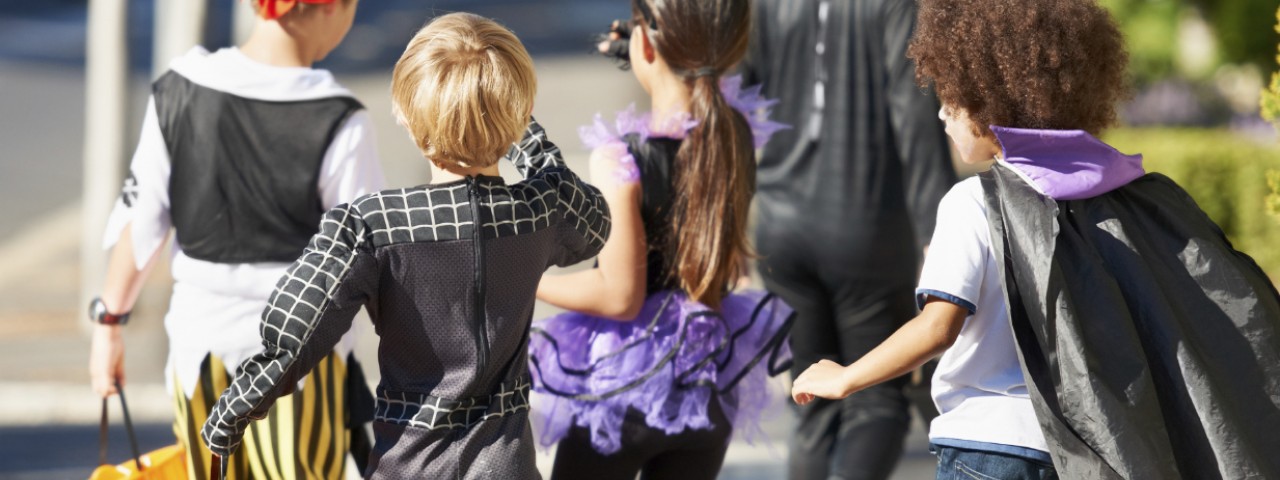How Does Halloween Build Community?
- Tweet

This article is part 6 of our "Tale of Two Children" series. Read Part 1
There is nothing quite like Halloween for young children. There are of course the costumes and the candy, the jack-o-lanterns and trick and treating.
But it’s one of the celebrations that shape attitudes – either positive or negative – toward family, neighbors, and environment which are crucial in the cognitive and social development of our youngest children.
In America, celebrations are often more Halloween than All Hallow’s Eve, but regardless of how families celebrate, few things in children’s lives are as hallowed as their environments. That’s certainly the case for five-year-old Tiffany and Briana, the subjects of our recent editions of Perceptions. For them, Halloween is a curious mixture of excitement and confusion. They are excited to be getting candy, but they are confused about why adults are carving up pumpkins (but they love being part of it).
Briana and Tiffany are much braver than they were in earlier years when they were unnerved by all the costumed people, especially those with blood dripping from their mouths, who were walking around the neighborhood and coming to their front doors. For five-years-old, it can still be disconcerting, but fortunately, both of the girls’ parents are putting them in costumes that have nothing to do with zombies, Dracula, werewolves, or anything else seen as scary and deadly to young children.
Briana is going to be a “very hungry caterpillar” based on the classic children’s book. Meanwhile, Tiffany has chosen – in a conversation with her mother – to be a princess, and they have been having fun putting her costume together. Because they live in a neighborhood with boarded up houses and others where people are often moving in and out, Tiffany’s mother has decided to take her to a special Halloween party at their church.
Meanwhile, Briana and her parents have been having fun decorating their front yard with a hay bale and pumpkins as encouragement for all the children in the neighborhood to come to their door. Meanwhile, they’ve been scouting out the houses with the most decorations in their neighborhood to decide where Briana will trick or treat.
All in all, Halloween makes for an adventure about neighborhoods and neighborliness. Parents often chalk up their children’s excitement to sugar highs and overstimulation, but it’s clear that for young children, what can overwhelm them are more often confusion and even fear. That’s why on Halloween, parents should stay with their children to reassure them, to explain what’s happening, and to be intentional about making the holiday a night of psychological growth when children and parents bond together to address events.
Early childhood research is clear: on Halloween, and every day of the year, neighborhoods have a profound impact on children because they help define parents’ abilities to create safe, healthy, and nurturing environments. Parks, playgrounds, and after-school programs offer opportunities for enriching experiences, and they also offer the social connections among adults that increase parents’ sense of support and well-being. Unfavorable neighborhood conditions can increase children’s risks for adverse experiences early in life, which can interfere with optimal brain development, cognitive growth, and emotional and behavioral adjustment.
We know that too many of our youngest children are at risk, and we also know that the neighborhoods where a disproportionate number of these children live are high-risk themselves. That’s why when we pursue goals for improving the futures of young children, we should also set a priority to make the targeted, substantial investments that are needed to fight neighborhood-level risk.
When it comes to their neighborhoods, Memphis children should not be faced with a trick or treat situation.
